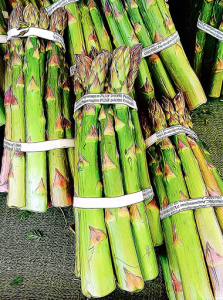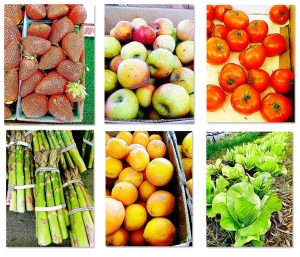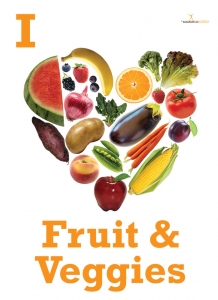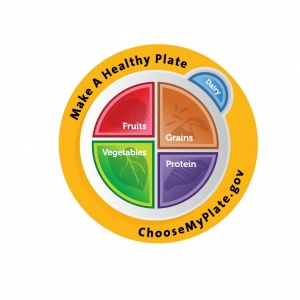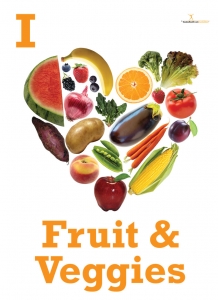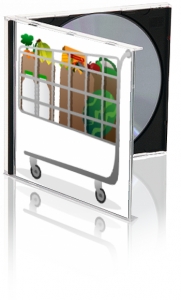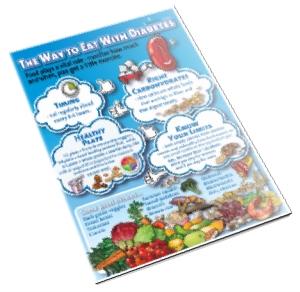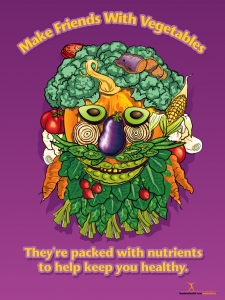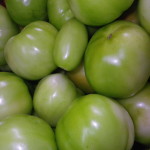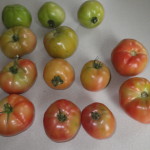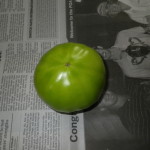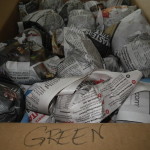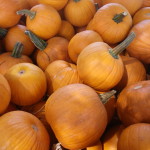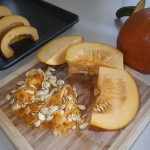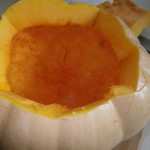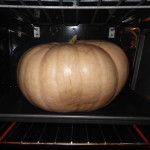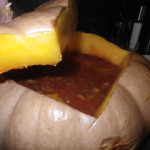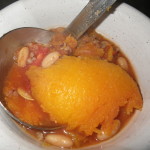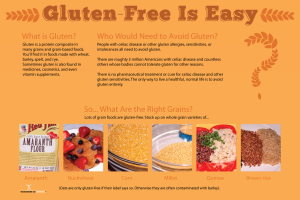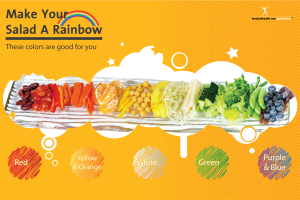California is awesome!
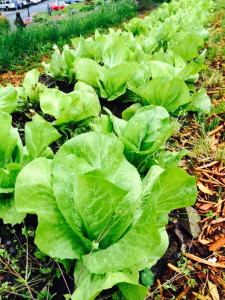 I had such a blast on my recent trip to UC Davis with my son. While I was there, I toured “America’s Best Farmers’ Market,” learned some tips for a successful farmers’ market visit and was inspired to create brand new food art posters. I also ran into a friend and CFFH subscriber and had a meal to remember at the Culinary Institute of America’s Napa campus, the Conservatory.
I had such a blast on my recent trip to UC Davis with my son. While I was there, I toured “America’s Best Farmers’ Market,” learned some tips for a successful farmers’ market visit and was inspired to create brand new food art posters. I also ran into a friend and CFFH subscriber and had a meal to remember at the Culinary Institute of America’s Napa campus, the Conservatory.
But the inspiration didn’t stop there.
While I was at the gardens of the CIA Greystone in Napa Valley, I was stopped in my tracks by the beauty of the fresh and bountiful foods they were growing. As I looked out over the fields of lettuce, the beautifully-developed leaves reflected the evening light. It has just rained, and it had been a misty day. So I did what I always do when I’m struck by beauty — I took a photo.
When I got home, I was still moved by the freshness and light in that photo. That place and time were just so special to me. I love the memories of my education at the Culinary Institute of America and Greystone is just wonderful. I decided that the photo needed to be more than a post on my Facebook wall. It needed to become a resource for health and nutrition educators.
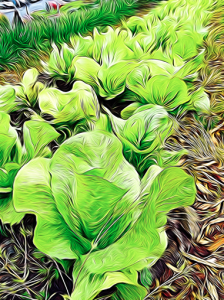 That’s why I added this image to the 6 pack of Farmers’ Market Fruit and Vegetable Paintings. With a photo editing app and some great metallic paper, I transformed this image into art that anyone would be proud to hang on their wall. The picture is 8 by 10 inches and is joined by paintings of fresh berries, tomatoes, apples, asparagus, and more!
That’s why I added this image to the 6 pack of Farmers’ Market Fruit and Vegetable Paintings. With a photo editing app and some great metallic paper, I transformed this image into art that anyone would be proud to hang on their wall. The picture is 8 by 10 inches and is joined by paintings of fresh berries, tomatoes, apples, asparagus, and more!
Originally, I had thought that this set would be perfect for office decorations, but I soon learned from our customers that these posters are great giveaway prizes and booth displays too. Because this poster set presents healthful foods in creative and appealing ways, it is a perfect tool to use to promote a healthy lifestyle.
This painting set emphasizes positive health messages. It does so visually, with no text or additions to distract from the beauty of fresh and healthful food. What’s not to love?
If you’d like to learn more about this poster set or if you’re ready to buy it today, just stop by the Nutrition Education Store!
Are you in love with lettuce? Try celebrating fresh and tender lettuces with the amazing recipe below!
French Herb Salad
Serves: 4
Serving Size: 1 cup
Ingredients:
- 2 cups arugula
- 1/2 cup baby romaine
- 1/2 cup baby mesclun
- 1 cup chopped flat leaf parsley
- Leaves from 1 sprig of mint
- 1 sprig of thyme
- 2 teaspoons olive oil
- Juice from 1 lemon
- 1 teaspoon red wine vinegar
- Black pepper to taste
Directions:
- Rinse the lettuces and dry them in a lettuce spinner. If you don’t have a spinner, pat the leaves dry with paper towels.
- Place greens and herbs in a bowl and keep refrigerated until ready to serve.
- When ready to serve, toss the greens and herbs with the olive oil, lemon juice, red wine vinegar, and black pepper.
- Serve on chilled plates.
Nutrition Information:
Serves 4. Each serving contains 32 calories, 2 g fat, 0 g saturated fat, 0 g trans fat, 0 mg cholesterol, 11 mg sodium, 2 g carbohydrate, 1 g dietary fiber, 1 g sugar, and 1 g protein.
Each serving has 49% DV vitamin A, 45% DV vitamin C, 3% DV calcium, and 5% DV iron.
Chef’s Tips:
- This salad looks nice if it is garnished with a balsamic vinegar glaze.
- If you don’t have all of the fresh herbs, feel free to just use parsley.
- You can also use a mix of other delicate lettuces instead of the romaine and mesclun. See what’s in season near you.
- Toss the salad gently.
Like what you see? Download the French Herb Salad handout for free!
Lettuce: Harvesting and Washing Tips
Is there anything better than a salad made with fresh, tender lettuces from a garden? I certainly can’t think of anything. In order to make the most of your lettuce harvest, try the following tips…
- You can pick lettuce directly from the plant — just pluck a few leaves from different areas of the head.
- If you have a pair of shears, use them to slice off the top 2/3 of the lettuce leaves, leaving the bottom 1/3 intact.
- Once you have your lettuce leaves, fill your (clean!) sink with very cold water. Gently swish the leaves around until the dirt falls off of them and settles at the bottom of your sink.
- You can also rinse the leaves under running water, but this method is not as gentle or thorough as the method above.
- Place your wet lettuce leaves in a salad spinner and spin until dry.
- If you don’t have a salad spinner, place the leaves on a pile of paper towels and pat dry with additional towels.
Remember, the Nutrition Education Store is the perfect source for nutrition posters, health presentations, educational handouts, and much more! Some bestselling customer favorites include…

Recipe Database: 1,000 Healthful Recipes Download

Cooking Demonstration Book



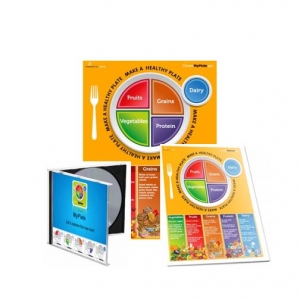


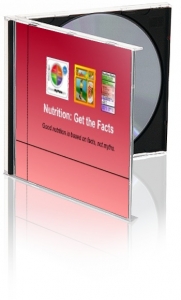

 Recently, I went to an open air farmers’ market in Davis California. Did you know that that market was voted “America’s Best Farmers’ Market”? How cool is that?!
Recently, I went to an open air farmers’ market in Davis California. Did you know that that market was voted “America’s Best Farmers’ Market”? How cool is that?!